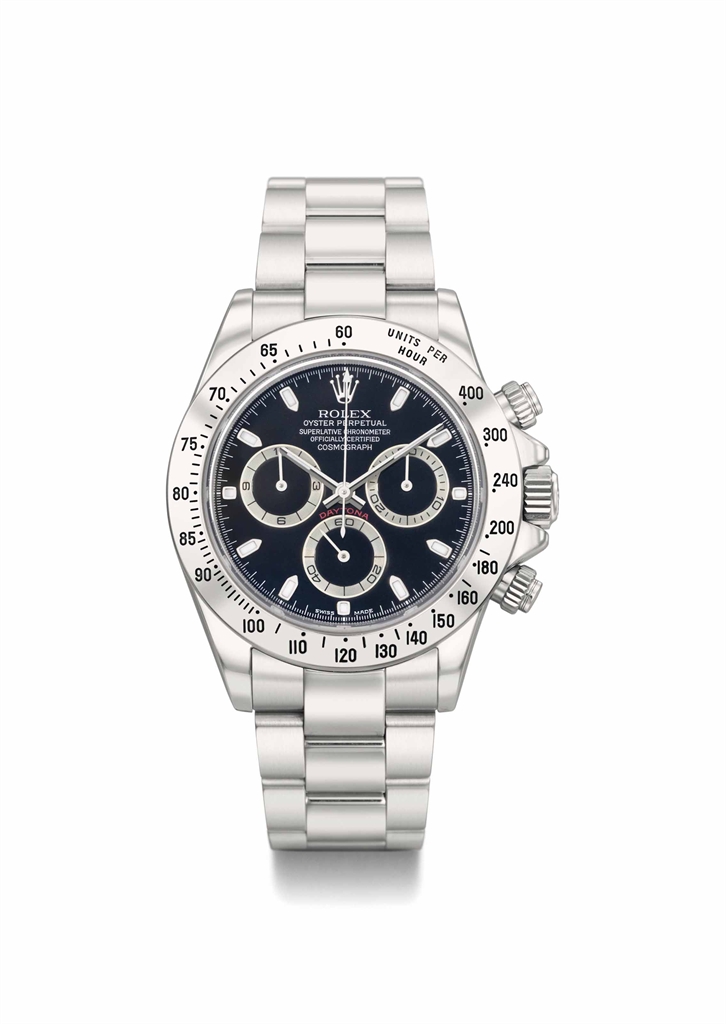Like many vintage Rolex enthusiasts, it’s taken me some time to fully digest the incredibly high results from Christie’s November 10th auction, “Rolex Daytona ‘Lesson One’: 50 exceptional examples of the world’s most celebrated chronograph wristwatch”, held in Geneva. When I say incredible, I mean it literally: the prices achieved by the majority of these Cosmographs really did defy belief. Some examples…
Right out of the chute, Lot 1’s lovely pump pusher 6239 with Underline and double-SWISS markings and slightly “Tropical” brown sub registers hammered for $296,250.
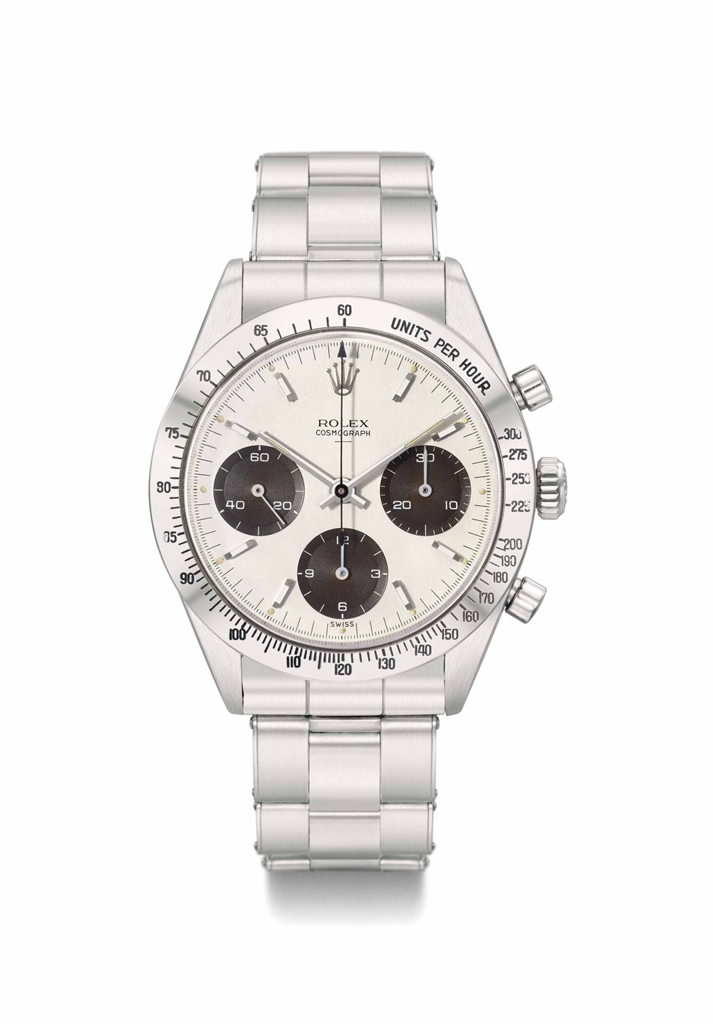
Lot 1, ref. 6239
Previously, I would have said that the estimate of $44-$88k was spot on with $88k being very ambitious.
Lot 13: A pump pusher 6262 in 18k with black dial and “Big Red” Daytona–an unusual combo to be sure.
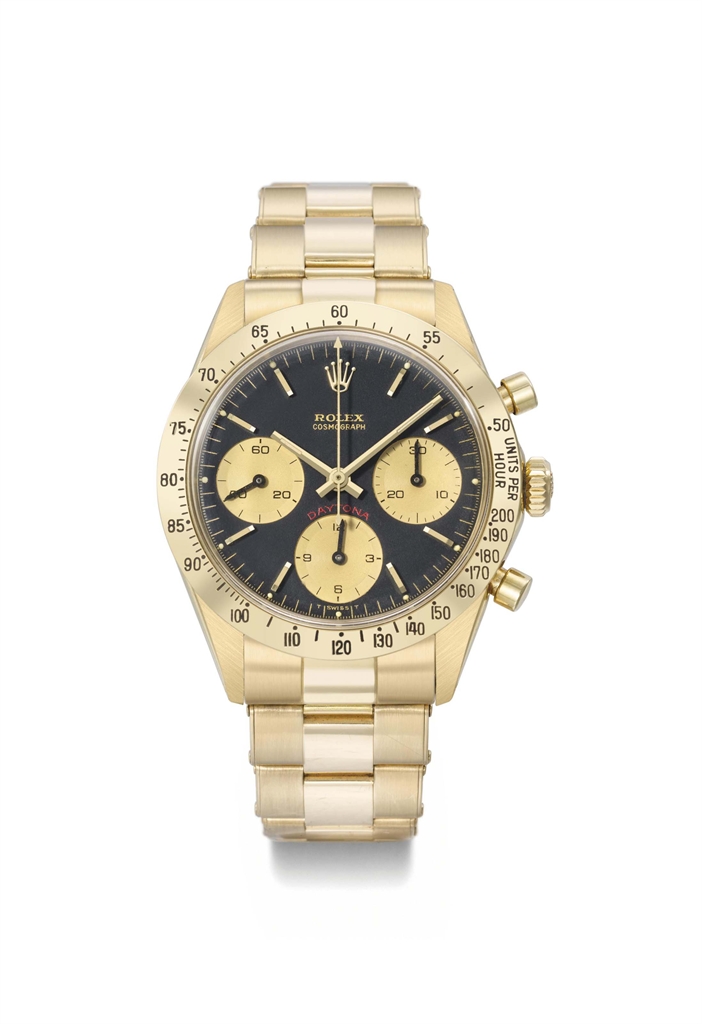
Lot 13, ref. 6262 in 18k YG
However, after coming in with a fairly high estimate of $88-$176k it gaveled for a little over $375k.
Lot 40: A custom job with “prototype” blue 16520 dial installed in a matching 18k Zenith Daytona. Not a watch for the purist generally speaking, as it was never really sold this way, it carried a rather grandiose estimate of $55-$110k.
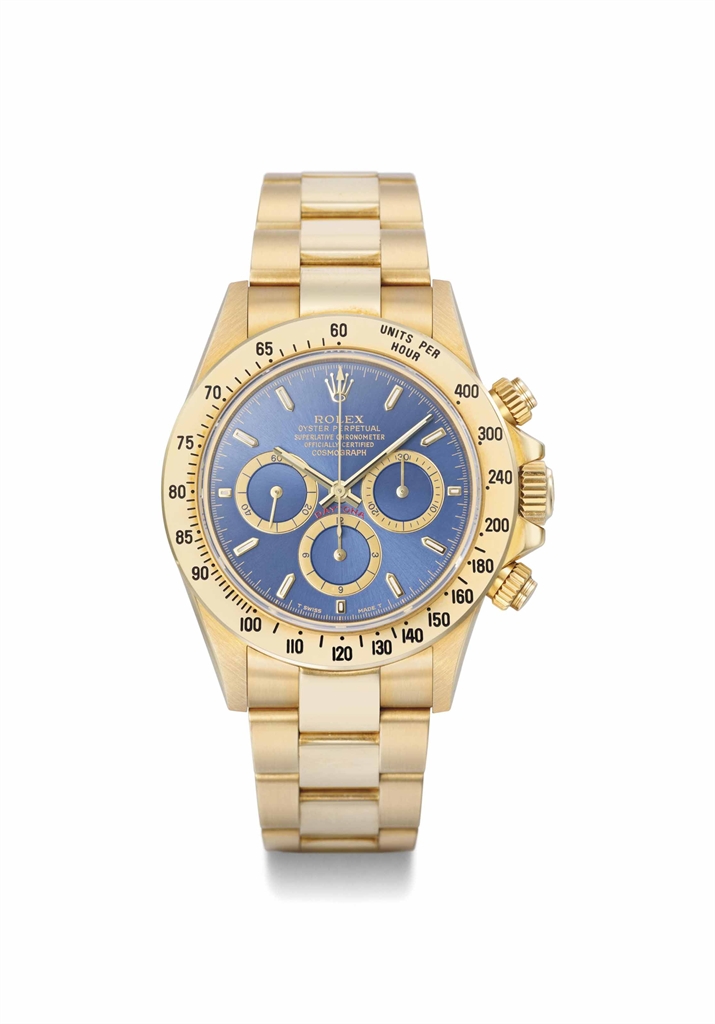
Lot 40, 18k ref. 16520 Daytona w/ prototype blue dial
It hammered for just over $283k.
And the result that had everyone gasping– Lot 23: A very rare 6263 “RCO” Paul Newman-dial Daytona, circa 1969. This is probably the rarest steel Oyster Newman dial and the watch’s condition was outstanding. But even so, the high end of the estimate of $220-$440k seemed a bit pie-in-the-sky.
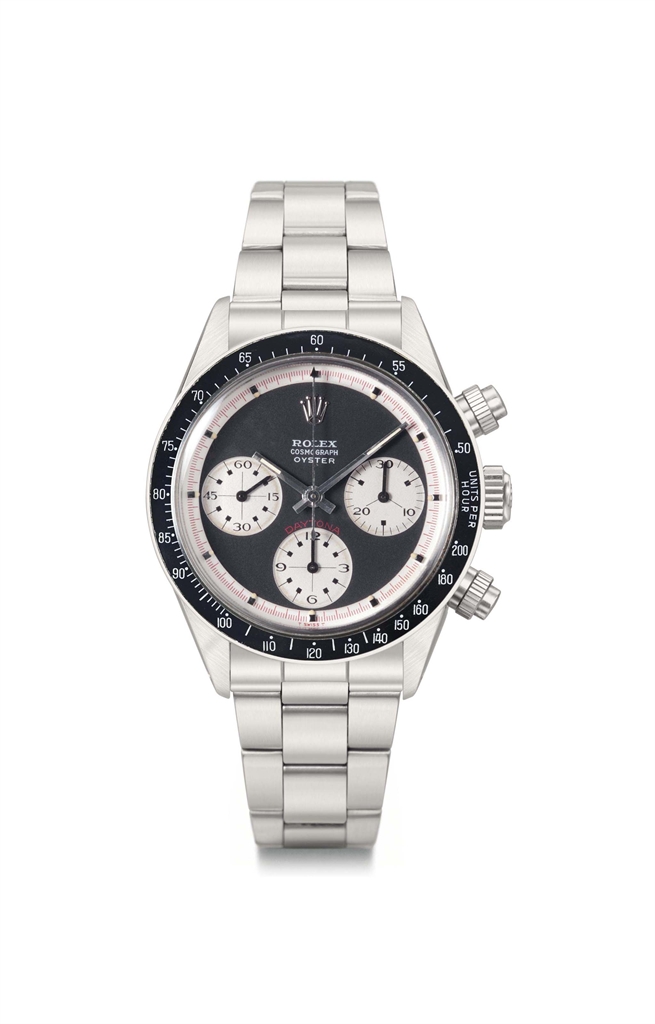
Lot 23, ref. 6263 PN in steel
Bidding finished up at $1,089,186. Yes, that’s seven digits.
And on and on. I encourage you to go through the lots yourself, especially the Notes for context. It’s a great read and the watches themselves are gorgeous. And nearly every one of them went for 2 to 3 times estimate and in some cases quite a bit higher than that.
So what is really going on with these world record prices from “Lesson One”? The facile comparison is to Antiquorum’s April 17, 2008 Rolex “Revolution” theme auction, where results also set new records for the time and nearly everything beat the estimates. However, leading up to the “Revolution” there had been a steady, heady climb in vintage Rolex prices over the previous 5 years or so if not longer, so that every month there were new benchmarks being set during that span. Vintage Rolex gained a whole new level of caché and following among younger guys and ladies as the symbol of cool and collectability due to a whole new generation of collectors entering the game, their numbers swelled by easy access to information and watches for sale via the Internet (as well as easy money and credit from high real estate values). And that all culminated in the Spring of ’08 with AQ’s Revolution… and then the bubble burst and prices came plummeting back to earth mirroring the chaos in world financial markets that was to finish out that troubled year. Sellers could no longer get top dollar for mediocre pieces and the irrational exuberance of the new collectors who had only known up, up, up! settled into the uneasy reality of a market matured and corrected, of watches worth less than they had been only 6 months ago for the first time since the collapse of the Bubbleback and Explorer markets about a decade prior.
But with that run up in the early 2000s there was a graphable 45 degree upward line for prices escalating from month to month and year to year. Steep, yes, but entirely logical. With Christie’s “Lesson One” this graph would look the antena on the Empire State Building planted on a small hill — a line straight up at a near 90 degree angle. For while vintage Rolex have recovered their value since the bust of late 2008 better than most brands (except perhaps Patek & Heuer) and prices have been moving incrementally higher over the past year or so, there is not really any precedent for the results of this Christie’s Daytona auction and no real harbingers from earlier in the year. And I’m not sure that if the buyers of these watches turned around tomorrow and tried to sell their purchases they would be able to recoup anything close to these prices. Likewise, if a regular collector tried to sell his nice Daytona tomorrow I doubt very much if he would able to get much above pre-November 10th going rates.
So what is really going on then? Well, to be fair some of these watches are genuinely special. Aside from the beauties I’ve already pictured, there were several Tiffany-signed dials (though no Cartier, oddly), exceedingly rare Paul Newman dials in gold and some really special/unique dial configurations and a number of watches with special provenance, such as those belonging to famous explorers or race car drivers.
Also, curator Pucci Papeleo put together these watches with a fine eye for diversity and quality and it is my understanding that they had an agreement with prospective sellers that if they got a better example from someone else, their watch would not make it into the top 50. And whoever wrote the catalog lot notes–maybe a combination of Mr. Papeleo and auctioneer Aurel Bacs?–really did their homework and fully incorporated the terminology that has been so well researched and coined by the serious collector community over the last decade. The text lays out what details really make the watches special and why it is important to the discerning collector in terms of rarity, as well as any special provenance attached to the watch. There was also clearly a special vibe happening in Geneva in early November because the next day’s “Important Watches” auction was pretty hot and heavy, as well, with strong results across the board.
All that said, however, these results are still very, very high and too out of whack for me to believe that they occurred organically or will have any real legs in real world terms… with the proviso that if certain parties are now entering the watch “market” the way they have previously entered real estate, fine art, wine and cars, the legs might prove to be very long indeed. We know from people in the room that much of the bidding came via the phone in the US and Europe and not as much in Asia or from top pro dealers, as might have been assumed. And if I had a bet, I would say that the majority of the bidders, since they were not dealers, were hedge fund guys. So then the next question is: why are they paying these exorbitant prices? To own the watches themselves for their pleasure as a trophy for amazingly prosperous good times? Or are they creating a “portfolio” of rare watches and instantly giving that portfolio exceptional value by setting new record prices? Will these watches reappear in 2 years time and will they then be bid even higher? If it is hedge fund strategy, do they then coordinate their efforts by bidding up other standard auctions for the next few years to really pump up the market and “prove” that “Lesson One” was not a fluke result but the bang before the boom (which will inevitably end with a whimper when the fund guys take their profits and go home)? All I know for sure is that talk of “Vintage Rolex Portfolios” have been raised with total seriousness before so to think that “watch fund managers” have abandoned the notion would be foolish. I think it is highly plausible that no matter how very sweet and special these 50 Daytonas were, these results were almost entirely manufactured with bidding between two or more seemingly distinct parties in fact coordinated for maximum results. Call me cynical but a jump this high this fast just defies most other explanations, especially with a room full of experienced veteran bidders staying out of the fray for the most part. Personally, I think they’ve made a bad bet and paid too much in trying to “make the market” because as rare as any given vintage Rolex is, there always seem to be at least 10+ more out there just like it. But then again, it’s hard to bet against billionaires and not come out looking foolish.
So where does that leave the common collector? Well, if you’ve got a Daytona or want one I say get the lay of the land for the next few months to see if these boffo results begin to move the market upward or if they have no ripple effect whatsoever. Chances are, “Lesson One” will pull prices northward a little quicker, especially as nice vintage Rolex watches were already trending higher in the past year anyway. So if you’re looking to buy, now or soon may be the time. If you own and look at your watches strictly as an investment to be bought low and sold high, or if you need the money, the next 6 months could well be the time to sell your Daytona or other vintage Rolex. If you’re a sucker like me, though, you’ll probably just keep wearing and enjoying it and to hell with the new world’s records and boom times, whatever the real reasons underlying them.



